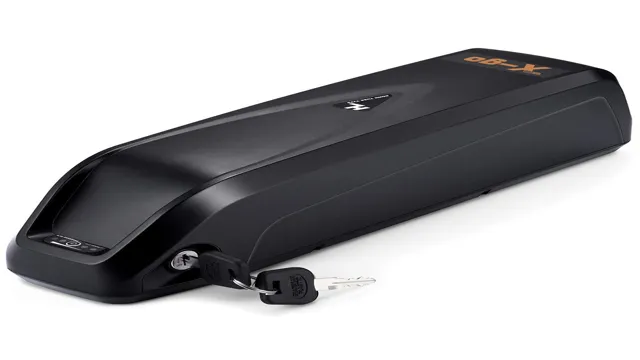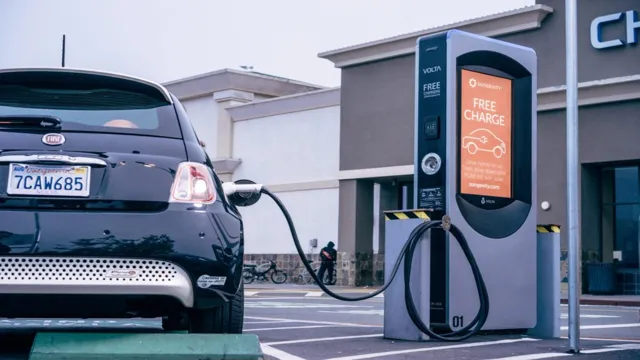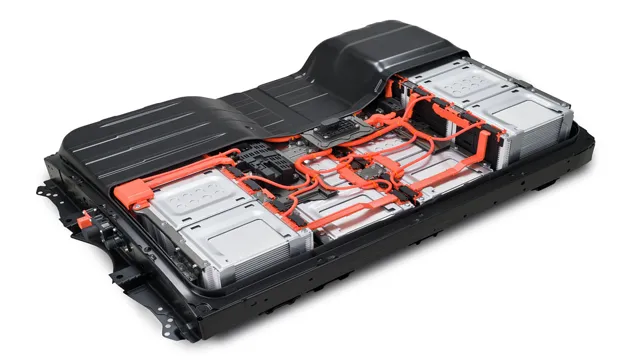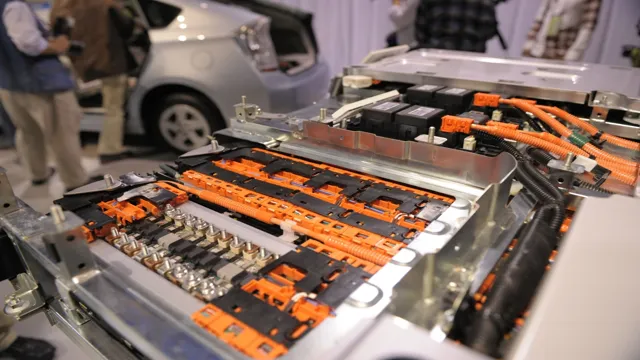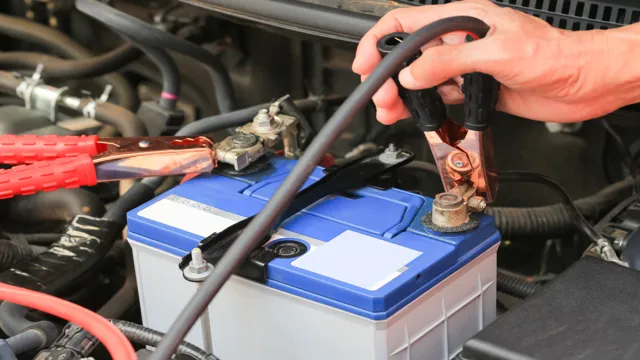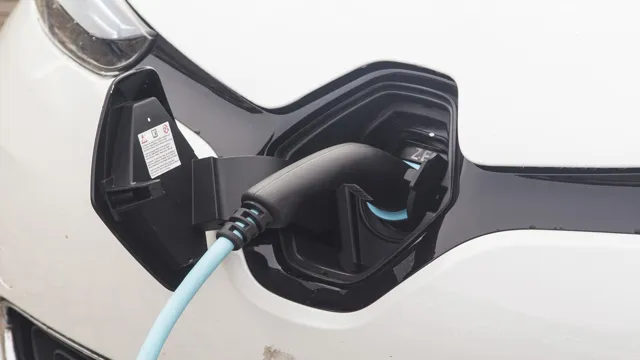Maximizing Your Electric Bike’s Performance: Essential Tips for Lithium Ion Battery Care
Electric bikes are gaining traction rapidly because of their eco-friendliness, convenience, and cost-effectiveness. They’re powered by lithium-ion batteries that are rechargeable, lightweight, and can last for a long time. However, just like any other battery-powered device, the battery life of an electric bike’s lithium-ion battery will eventually degrade.
That’s why it’s crucial to know how to care for it properly to extend its lifespan and ensure optimal performance. In this blog, we’ll dive into the tips and tricks of taking care of your electric bike’s lithium-ion battery. So whether you’re a seasoned electric bike rider or a novice, this blog is for you.
Let’s begin!
Why lithium ion batteries are popular for electric bikes
When it comes to electric bikes, lithium ion batteries have emerged as a popular choice. There are several reasons why these batteries are preferred over others. For one, they are more compact and lightweight, making them easier to install and handle.
Additionally, they offer higher energy density, meaning they can store more energy per unit of weight. This allows for longer rides and better performance. However, like any battery, it’s essential to take care of them properly to extend their lifespan.
When not in use, lithium ion batteries for electric bikes should ideally be kept at around 50% charge, and not allowed to discharge completely. Overcharging can also harm the battery and shorten its lifespan. Therefore, investing in a good charger that ensures a consistent charge and prevents overcharging is crucial.
Proper maintenance not only ensures the longevity of the battery but also enhances the overall performance and safety of your electric bike.
Benefits of lithium ion batteries
Lithium ion batteries have become increasingly popular in the world of electric bikes, and for good reason. These types of batteries have several benefits over traditional lead-acid batteries. Firstly, they are much lighter, making them ideal for use in electric bikes, where weight is a crucial factor.
Additionally, lithium ion batteries are more efficient, meaning they can store more energy for longer periods of time. This is particularly important for electric bikes, as riders want to be able to travel longer distances without having to constantly stop and recharge. Another major benefit of lithium ion batteries is their longevity.
They can last for several years, which is much longer than traditional lead-acid batteries. This means that electric bike owners can enjoy longer use out of their batteries without having to replace them as frequently. Overall, the benefits of lithium ion batteries make them a smart investment for anyone who is serious about using their electric bike for extended periods of time.

What makes lithium ion batteries different from other bike batteries
Lithium ion batteries are the most popular choice for electric bike batteries due to their many advantages. They are lightweight, compact, and can store a lot of energy. Compared to other types of batteries, they have a longer lifespan and are more efficient.
Lithium ion batteries also have a high energy density, meaning they can provide a lot of power in a smaller size. This makes them ideal for use in electric bikes, which require a lot of energy to power the motor and propel the bike forward. Additionally, lithium ion batteries can be charged quickly and have little risk of explosion or flammability.
Overall, the many benefits of lithium ion batteries make them the preferred choice for electric bike enthusiasts, offering reliable and efficient power to get you where you need to go.
Charging your electric bike lithium ion battery
Electric bike lithium ion battery care is essential if you want to get the most out of your battery. One of the most critical aspects of battery care is proper charging. You’ll want to start by using a charger that is designed specifically for your lithium ion battery.
Avoid using generic chargers that can damage the battery or reduce its lifespan. When charging the battery, make sure to keep it at room temperature, and only charge it up to the recommended voltage level. Overcharging and undercharging can both be detrimental to the health of your battery, so be sure to monitor it while it charges.
Lastly, always disconnect the battery from the charger once it’s fully charged to prevent any further damage. By following these simple tips, you’ll be able to keep your electric bike lithium ion battery in top shape and extend its lifespan for years to come.
Tips for charging your lithium ion battery
If you own an electric bike, it’s important to understand how to properly charge your lithium ion battery. The first thing to know is that it’s best to charge your battery to a maximum of 80%, rather than letting it go all the way to 100%. This is because lithium ion batteries have a limited number of charge cycles, and charging to 100% can wear them out more quickly.
Additionally, it’s important to avoid charging your battery too quickly. A slow, steady charge is much better for the battery’s longevity than a fast charge that can generate heat and cause damage. Finally, try to avoid letting your battery fully discharge before charging it.
Keeping your battery in the 20-80% range is optimal for prolonging its lifespan and ensuring high performance. Remember to follow these tips to get the most out of your lithium ion battery and enjoy many miles of worry-free riding!
How long does it take to charge a lithium ion battery?
Charging your electric bike lithium ion battery can take anywhere from a few hours to several hours, depending on the size of the battery and the charger being used. Generally speaking, a standard 500mAh battery can be fully charged in approximately 2-3 hours, while a larger battery with a capacity of 1000mAh or more may take up to 6-8 hours to charge completely. It’s important to note that charging times can also be affected by factors such as the temperature, age, and condition of the battery itself.
One tip to keep in mind is to always use a charger that is specifically designed for lithium ion batteries to avoid any damage to the battery. While it may take some time for your battery to fully charge, the good news is that once it’s charged, you can enjoy long and uninterrupted rides on your electric bike.
Overcharging and its effects on lithium ion batteries
Electric bike lithium ion battery Charging your electric bike lithium ion battery sounds simple enough, but there’s more to it than just plugging it in. Overcharging your battery can cause serious damage to the lithium ion cells, even resulting in a fire. This is why it’s important to use the charger that came with your bike and follow the manufacturer’s instructions.
You’ll want to avoid continuous charging and make sure to unplug the battery when it reaches its full charge. Keeping your battery charged between 20% and 80% is also recommended for optimal performance and longevity. Remember, taking the time to properly charge your electric bike lithium ion battery will pay off in the long run with a longer lifespan and safer riding experience.
Storing your electric bike lithium ion battery
Taking care of your electric bike lithium ion battery is crucial to keep it functioning at its best. One of the most important aspects of battery care is proper storage. When you’re not using your electric bike for an extended period, it’s essential to store the battery correctly.
The ideal storage temperature for lithium-ion batteries is between 20°C and 25°C. Avoid storing your battery in extreme temperatures, such as in a freezer or under direct sunlight, as it can damage the battery’s cells. Also, make sure to charge your battery before storing it and disconnect it from your bike.
Keeping your electric bike lithium-ion battery in good condition through proper storage will help extend its lifespan and ensure that you have a reliable power source for your next ride. So, always remember to store your battery in a cool and dry place, and keep it away from any moisture or flammable materials. With proper care, your electric bike lithium-ion battery can last for many years.
Ideal storage conditions for lithium ion batteries
If you own an electric bike, you know that one of the most important components is the lithium ion battery. But did you know that proper storage is crucial for maintaining the battery’s performance and extending its lifespan? When it comes to storing your electric bike lithium ion battery, there are a few key factors to consider. First, it’s important to keep the battery in a cool, dry place away from direct sunlight and extreme temperatures.
Second, make sure the battery is stored at around a 50% charge. This helps prevent the battery from becoming overcharged or completely discharged, both of which can damage the battery over time. Finally, be sure to periodically check on the battery and charge it up if it’s been sitting for more than a month.
By following these guidelines, you can help ensure that your lithium ion battery remains in good condition and performs optimally for years to come.
How to prepare your battery for storage
If you’re looking to store your electric bike lithium ion battery for an extended period of time, it’s essential to prepare it properly. First and foremost, make sure your battery is fully charged before storage. Leaving your battery at low charge for an extended time period can cause it to degrade and eventually become unusable.
Once it’s fully charged, it’s best to store your battery in a cool, dry place, away from direct sunlight. You can also use a storage bag to protect it from dust and moisture. It’s best to avoid extremes in temperature and keep your battery at room temperature, ideally between 20-25°C (68-77°F).
Finally, it’s essential to check on your battery periodically to ensure it’s maintaining its charge while in storage. By following these simple steps, you can extend the life of your electric bike lithium ion battery significantly and help ensure it’s ready to use when you’re ready to ride.
Maintaining your electric bike lithium ion battery
Taking care of your electric bike lithium-ion battery is crucial for its longevity and efficiency. To maintain your battery, it’s recommended to never let it fully drain and to charge it after each use. If you plan on storing your bike for an extended period, make sure to charge the battery at least once every month to prevent it from losing its charge completely.
Avoid exposing your battery to extreme temperatures, such as leaving it in direct sunlight or storing it in freezing temperatures, as this can damage the battery and reduce its lifespan. Additionally, regular cleaning and maintenance of the battery’s connections and terminals are essential to prevent corrosion and ensure proper functioning. By following these simple tips, you can increase the lifespan of your electric bike lithium-ion battery and enjoy a seamless riding experience.
Checking your battery’s charge level
Maintaining an electric bike lithium ion battery can be crucial to ensure optimal performance and longevity. One key aspect of battery maintenance is regularly checking its charge level. It’s important to not let the battery drain completely or overcharge it, as both can significantly reduce its lifespan.
Many electric bikes have a display that shows the battery’s charge level, but if yours doesn’t, consider investing in an external battery meter. Some battery meters can also provide information on the battery’s health and temperature, which can be useful in identifying potential problems. By keeping an eye on your battery’s charge level and taking precautions to prevent overcharging or draining, you can enjoy a longer-lasting and more reliable electric bike ride.
When to replace your lithium ion battery
Maintaining your electric bike’s lithium ion battery is essential for ensuring its longevity and performance. As a general rule of thumb, it is recommended to replace lithium ion batteries every 2-3 years or after around 500 charge cycles. However, this may vary depending on the usage and care of the battery.
To extend the life of your battery, it is important to avoid extreme temperatures, store it properly when not in use, and avoid completely draining the battery. Regularly cleaning the battery terminals and regularly checking the battery’s charge level can also help maintain its health. If you do need to replace your lithium ion battery, be sure to properly dispose of it and consider investing in a higher quality replacement.
By properly maintaining your electric bike’s lithium ion battery, you can ensure its reliable performance and save money in the long run.
Conclusion
In conclusion, taking care of your electric bike’s lithium ion battery is essential to ensure optimal performance and a longer lifespan. Just like any relationship, it requires a bit of effort and attention to keep things running smoothly. Remember to fully charge and store your battery properly, avoid extreme temperatures and keep an eye on any signs of wear and tear.
By treating your battery with care and respect, you’ll be able to enjoy the ride for years to come. After all, a healthy battery is the spark that ignites every adventure on your trusty e-bike!”
FAQs
What is an electric bike lithium ion battery?
An electric bike lithium ion battery is a rechargeable battery pack used to power electric bikes.
How do I extend the life of my electric bike lithium ion battery?
To extend the life of your electric bike lithium ion battery, avoid exposing it to extreme temperatures, charge it regularly, and avoid completely draining it.
How long does an electric bike lithium ion battery last?
The lifespan of an electric bike lithium ion battery depends on various factors, including usage, charging habits, and care, but it can last for up to three years with regular use.
Can I replace my electric bike lithium ion battery?
Yes, most electric bike manufacturers offer replacement batteries or battery upgrades for their bikes. However, it is recommended to purchase a replacement battery from the same manufacturer to ensure compatibility.

